Seven crowd-free alternatives to Italy's tourist hotspots
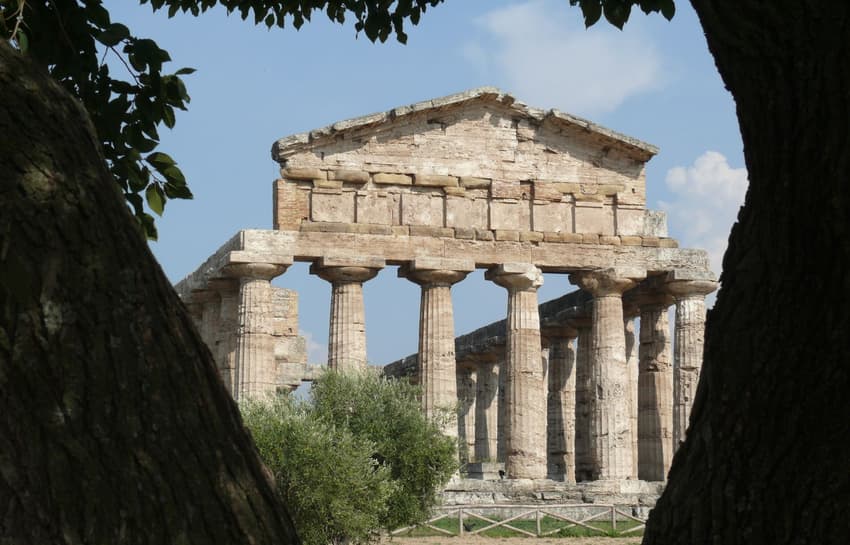
As Italy reopens to tourism, many people will be wanting to avoid the crowds that flock to hotspots like Venice and Florence. Here are seven lesser-visited (but no less beautiful) areas to try instead.
For centuries, tourists have visited to Italy in droves, spellbound by Roman ruins, Venetian canals and the Amalfi beaches. But large parts of the country still remain little-known to most travellers.
In recent years Italy's major tourist hotspots have been increasingly struggling to handle overcrowding, with much of the country's tourism concentrated in just a few cities.
Some had in fact started trying to deter the crowds - with Venice and Rome handing out fines for 'unruly' behaviour, and Florence's mayor ordering monument steps to be hosed down at lunchtime in a bid to drive away snacking tourists.
But since the pandemic began, even these cities found themselves with the opposite problem: no visitors at all, as Italy's valuable tourism industry ground to a halt.
As tourism slowly returns, the country's biggest hotspots will no doubt be the first to tempt visitors back. And if you're still set on seeing Italy's main tourist attractions, it's not a bad time to visit with fewer crowds than usual.
However, now is also the ideal time to venture off the beaten track if you'd like to avoid crowds altogether and support local economies in Italy's smaller towns.
So this summer, ditch the crowds of Florence, Venice, Amalfi and Pompeii for one of our seven favourite lesser-known spots.
The Lakes: Lake Iseo
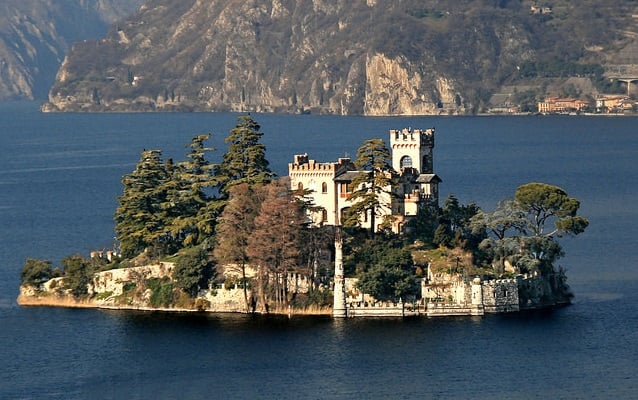
Photo: Pom Angers/Flickr
Forget Como. Avoid Maggiore and Garda. Lake Iseo, midway between Como and Garda, is spell-binding, but for some reason doesn't have the same popularity with tourists and glitzy celebs. Its tranquil setting is perfect for camping, walking or cycling holidays, and in the summer you can swim in the clear waters.
You can stay in one of the many campsites, or a local village like Iseo or Sale Marasino where accommodation is relatively cheap and the locals are welcoming. The highlight is taking a ferry to Monte Isola - the largest lake island in Europe.
You’re also close to Franciacorta, Lombardy's wine region, and big cities like Brescia, Verona and Milan to get your culture fix. It can be difficult to find tourist information about Iseo, but the Visit Iseo website has recently been set up by a resident to share his favourite activities and undiscovered spots.
Getting there: Regular trains run from Brescia, and you can drive from Milan's airports (or take a bus from there to Brescia if you need to use public transport).
For the Pompeii experience without the crowds: Herculaneum
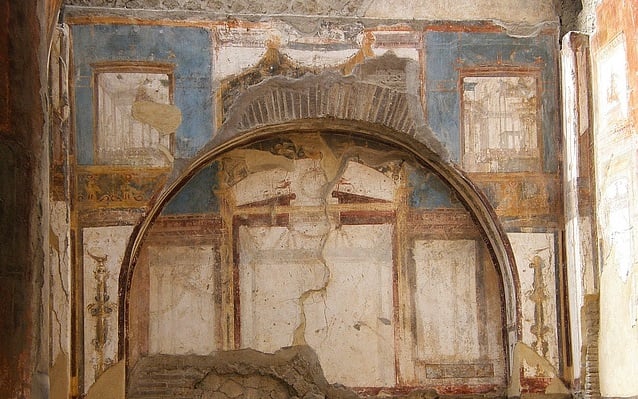
Photo: Andrew Fogg/Flickr
Everyone goes to Pompeii - in fact, tourists traipsing along the same route are damaging the ruins - but nearby Herculaneum is arguably better preserved and its compact size makes it possible to explore completely within an afternoon.
The Roman fishing town was destroyed by the same eruption that brought Pompeii to the ground, but because it was further from Vesuvius, it was buried by volcanic flows from the ground up, rather than collapsing under falling ash - which means many buildings still have their upper storeys intact.
You can admire the Roman baths and several grand villas still in great condition, decorated with frescos and mosaics. Don't miss the Villa of the Papyri, the only surviving library from the period, which is home to several important archaeological finds.
Getting there: Buses will bring you to the Ercolano Scavi station in 25 minutes from Naples and 40 minutes from Sorrento - from there it's a short walk to the site.
READ ALSO:
- Which countries have dropped travel restrictions on Italy?
- When will Americans be allowed to travel to Italy again?
For island charm: Procida
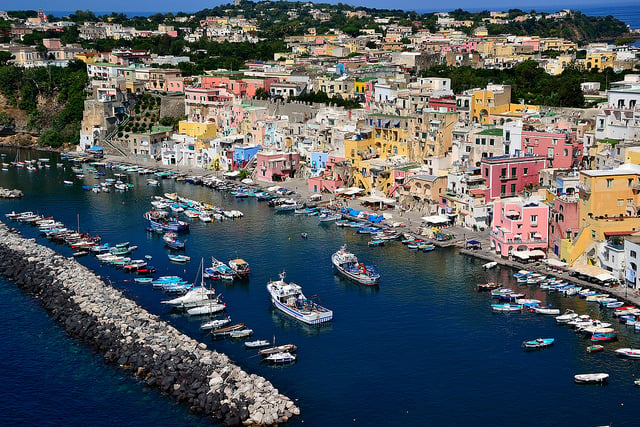
Photo: 2benny/Flickr
Sure, Capri and Ischia are beautiful - but they know it, so they hike up the prices. But their smaller, less flashy neighbour, Procida, is just as lovely, and with 10,000 residents and few tourists, you get more of a sense that you're visiting 'the real Italy'. It also has affordable accommodation, making it a good base even if you also want to check out its more glamorous neighbours.
READ ALSO:
Walking is the best way to experience the island; head to the Abbey of St Michael at its highest point, from which you can walk down to the picturesque Corricella marina, which has plenty of waterside bars and restaurants offering views across the bay. Chiaia is Procida's best beach, over on the other side of the four square kilometre island.
Get there: Ferries from either Naples or Ischia.
For a beach break: Sperlonga
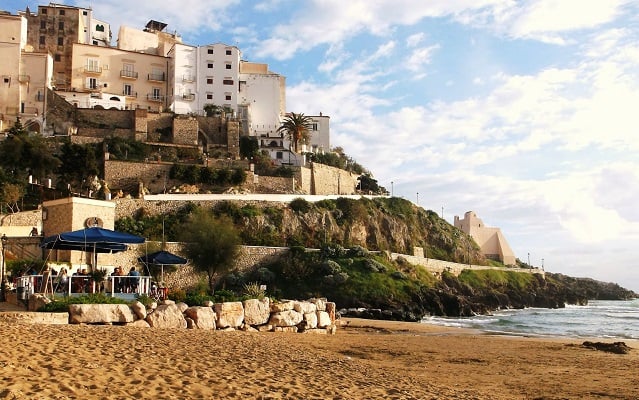
Photo: Catherine Edwards/The Local
Sperlonga remains little known among foreigners, who opt for the beautiful but crowded beaches of Rimini or Positano, but it has long been a favourite with Italians, who flock to the beach in the summer months.
Celebrities from French author Albert Camus to Brigitte Bardot have visited its sandy beaches, which are usually packed in August - but if you visit outside peak season, you can enjoy the extended summer in virtual solitude.
READ ALSO:
If you get bored of the empty beaches, you can explore the museum in the grounds of an old Roman villa owned by Emperor Tiberius, and check out the remains of the grotto where he entertained guests. The town itself has narrow streets with white houses, and plenty of restaurants serving fresh fish.
Getting there: The station Fondi-Sperlonga lies midway along the Rome-Naples railway line, so get off there and take the bus down to the seafront.
For Greek ruins: Paestum
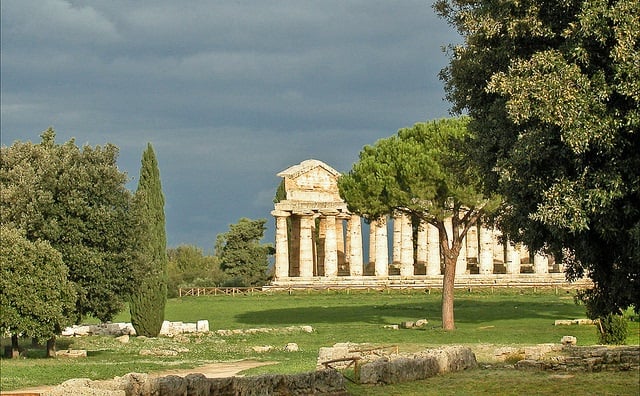
Photo: Jean-PierreDalbera/Flickr
Thought Italy was all about the Romans? It also has some impressive Greek ruins in the south, and the best preserved on the mainland are in Paestum, Campania. Taormina in Sicily is the go-to destination for Greek history fans, and it boasts a beautiful theatre, but its location along many cruise ship routes means it has become crowded and very touristy.
Meanwhile, Paestum's small village centre, beach, and its three magnificent Greek temples, are so far off the beaten track that you may even get them to yourself if you visit outside August - and after the coronavirus crisis, the sites management say they're now focusing on a "different kind of tourism".
MORE TRAVEL:
The temples were built for three Greek goddesses and are the highlight of Paestum, but there are also some smaller Roman ruins including a forum and ancient villas. It's possible to see all the ruins in a day, so it can easily be slotted into a trip around the region.
If that's not enough, there are unspoilt sandy beaches nearby in the Cilento region, which is also known as the birthplace of Mediterranean diet.
Getting there: Trains run from Salerno (30 minutes) and Naples (1.5 hours). During the summer months you can also get ferries to and from the Amalfi Coast and Naples.
For a cultural city break: Padua
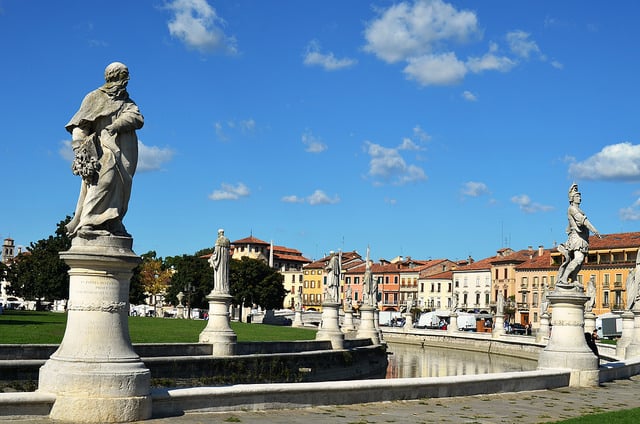
Photo: Pedro/Flickr
More understated than neighbouring Venice or artsy Florence and Milan, Padua is perfect for culture lovers looking for a city break. A thriving student city, there's plenty to do and see, including cathedrals, museums and boat trips. There are stunning frescoes by Giotto and other Renaissance greats, as well as a great street art scene.
Make like a local and hang out in the main square, Prato delle Valle. It's one of Europe's largest and most beautiful, with a small canal and little island surrounded by statues.
Get there: Treviso and Venice Marco Polo are the nearest airports, or you can take a train from many major Italian cities.
For Sicilian island escapes: The Egadi Islands
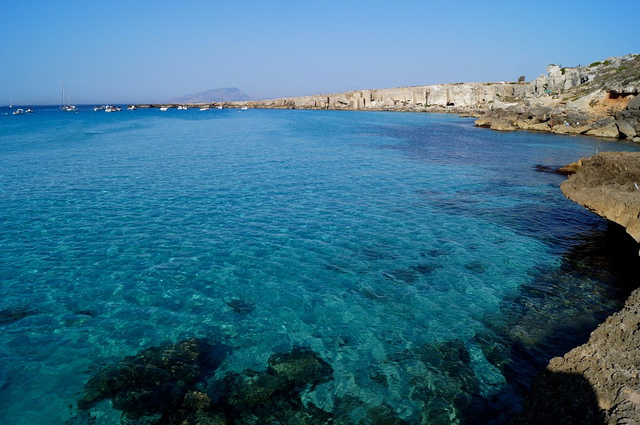
Favignana. Photo: Gabriele Fontana/Flickr
The Aeolian Islands are fashionable and pricey, while the Egadi Islands have less dramatic landscapes but a more local feel. Favignana and Levanzo are the two largest, with more options catering to tourists, while Marettimo feels truly remote. They are closer to Tunisia than to Italy and North African influence is clear in the island architecture and cuisine.
All three are worth exploring for the bays, coves and mountain paths, but especially for their caves with prehistoric art, which can be reached by scuba diving, boat trips, or walking.
Getting there: They’re easily reachable from Ryanair’s Trapani airport, and ferry rides run from Trapani or Marsala.
MORE TRAVEL OFF THE BEATEN PATH:
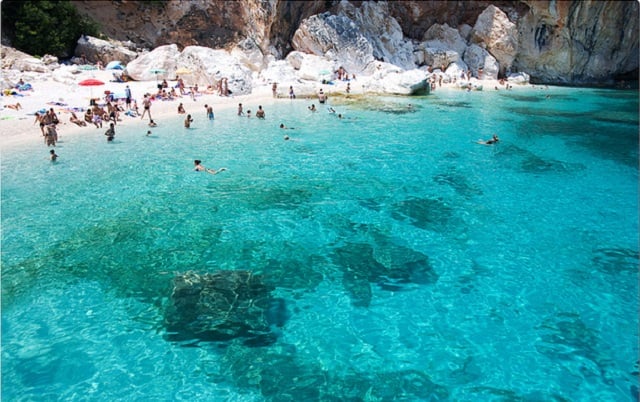 Cala Mariolu, Sardinia. Photo: Paolo Terraneo/Flickr
Cala Mariolu, Sardinia. Photo: Paolo Terraneo/Flickr
Comments (2)
See Also
For centuries, tourists have visited to Italy in droves, spellbound by Roman ruins, Venetian canals and the Amalfi beaches. But large parts of the country still remain little-known to most travellers.
In recent years Italy's major tourist hotspots have been increasingly struggling to handle overcrowding, with much of the country's tourism concentrated in just a few cities.
Some had in fact started trying to deter the crowds - with Venice and Rome handing out fines for 'unruly' behaviour, and Florence's mayor ordering monument steps to be hosed down at lunchtime in a bid to drive away snacking tourists.
But since the pandemic began, even these cities found themselves with the opposite problem: no visitors at all, as Italy's valuable tourism industry ground to a halt.
As tourism slowly returns, the country's biggest hotspots will no doubt be the first to tempt visitors back. And if you're still set on seeing Italy's main tourist attractions, it's not a bad time to visit with fewer crowds than usual.
However, now is also the ideal time to venture off the beaten track if you'd like to avoid crowds altogether and support local economies in Italy's smaller towns.
So this summer, ditch the crowds of Florence, Venice, Amalfi and Pompeii for one of our seven favourite lesser-known spots.
The Lakes: Lake Iseo

Photo: Pom Angers/Flickr
Forget Como. Avoid Maggiore and Garda. Lake Iseo, midway between Como and Garda, is spell-binding, but for some reason doesn't have the same popularity with tourists and glitzy celebs. Its tranquil setting is perfect for camping, walking or cycling holidays, and in the summer you can swim in the clear waters.
You can stay in one of the many campsites, or a local village like Iseo or Sale Marasino where accommodation is relatively cheap and the locals are welcoming. The highlight is taking a ferry to Monte Isola - the largest lake island in Europe.
You’re also close to Franciacorta, Lombardy's wine region, and big cities like Brescia, Verona and Milan to get your culture fix. It can be difficult to find tourist information about Iseo, but the Visit Iseo website has recently been set up by a resident to share his favourite activities and undiscovered spots.
Getting there: Regular trains run from Brescia, and you can drive from Milan's airports (or take a bus from there to Brescia if you need to use public transport).
For the Pompeii experience without the crowds: Herculaneum

Photo: Andrew Fogg/Flickr
Everyone goes to Pompeii - in fact, tourists traipsing along the same route are damaging the ruins - but nearby Herculaneum is arguably better preserved and its compact size makes it possible to explore completely within an afternoon.
The Roman fishing town was destroyed by the same eruption that brought Pompeii to the ground, but because it was further from Vesuvius, it was buried by volcanic flows from the ground up, rather than collapsing under falling ash - which means many buildings still have their upper storeys intact.
You can admire the Roman baths and several grand villas still in great condition, decorated with frescos and mosaics. Don't miss the Villa of the Papyri, the only surviving library from the period, which is home to several important archaeological finds.
Getting there: Buses will bring you to the Ercolano Scavi station in 25 minutes from Naples and 40 minutes from Sorrento - from there it's a short walk to the site.
- Which countries have dropped travel restrictions on Italy?
- When will Americans be allowed to travel to Italy again?
For island charm: Procida

Photo: 2benny/Flickr
Sure, Capri and Ischia are beautiful - but they know it, so they hike up the prices. But their smaller, less flashy neighbour, Procida, is just as lovely, and with 10,000 residents and few tourists, you get more of a sense that you're visiting 'the real Italy'. It also has affordable accommodation, making it a good base even if you also want to check out its more glamorous neighbours.
READ ALSO:
Walking is the best way to experience the island; head to the Abbey of St Michael at its highest point, from which you can walk down to the picturesque Corricella marina, which has plenty of waterside bars and restaurants offering views across the bay. Chiaia is Procida's best beach, over on the other side of the four square kilometre island.
Get there: Ferries from either Naples or Ischia.
For a beach break: Sperlonga
Photo: Catherine Edwards/The Local
Sperlonga remains little known among foreigners, who opt for the beautiful but crowded beaches of Rimini or Positano, but it has long been a favourite with Italians, who flock to the beach in the summer months.
Celebrities from French author Albert Camus to Brigitte Bardot have visited its sandy beaches, which are usually packed in August - but if you visit outside peak season, you can enjoy the extended summer in virtual solitude.
READ ALSO:
If you get bored of the empty beaches, you can explore the museum in the grounds of an old Roman villa owned by Emperor Tiberius, and check out the remains of the grotto where he entertained guests. The town itself has narrow streets with white houses, and plenty of restaurants serving fresh fish.
Getting there: The station Fondi-Sperlonga lies midway along the Rome-Naples railway line, so get off there and take the bus down to the seafront.
For Greek ruins: Paestum

Photo: Jean-PierreDalbera/Flickr
Thought Italy was all about the Romans? It also has some impressive Greek ruins in the south, and the best preserved on the mainland are in Paestum, Campania. Taormina in Sicily is the go-to destination for Greek history fans, and it boasts a beautiful theatre, but its location along many cruise ship routes means it has become crowded and very touristy.
Meanwhile, Paestum's small village centre, beach, and its three magnificent Greek temples, are so far off the beaten track that you may even get them to yourself if you visit outside August - and after the coronavirus crisis, the sites management say they're now focusing on a "different kind of tourism".
MORE TRAVEL:
The temples were built for three Greek goddesses and are the highlight of Paestum, but there are also some smaller Roman ruins including a forum and ancient villas. It's possible to see all the ruins in a day, so it can easily be slotted into a trip around the region.
If that's not enough, there are unspoilt sandy beaches nearby in the Cilento region, which is also known as the birthplace of Mediterranean diet.
Getting there: Trains run from Salerno (30 minutes) and Naples (1.5 hours). During the summer months you can also get ferries to and from the Amalfi Coast and Naples.
For a cultural city break: Padua

Photo: Pedro/Flickr
More understated than neighbouring Venice or artsy Florence and Milan, Padua is perfect for culture lovers looking for a city break. A thriving student city, there's plenty to do and see, including cathedrals, museums and boat trips. There are stunning frescoes by Giotto and other Renaissance greats, as well as a great street art scene.
Make like a local and hang out in the main square, Prato delle Valle. It's one of Europe's largest and most beautiful, with a small canal and little island surrounded by statues.
Get there: Treviso and Venice Marco Polo are the nearest airports, or you can take a train from many major Italian cities.
For Sicilian island escapes: The Egadi Islands

Favignana. Photo: Gabriele Fontana/Flickr
The Aeolian Islands are fashionable and pricey, while the Egadi Islands have less dramatic landscapes but a more local feel. Favignana and Levanzo are the two largest, with more options catering to tourists, while Marettimo feels truly remote. They are closer to Tunisia than to Italy and North African influence is clear in the island architecture and cuisine.
All three are worth exploring for the bays, coves and mountain paths, but especially for their caves with prehistoric art, which can be reached by scuba diving, boat trips, or walking.
Getting there: They’re easily reachable from Ryanair’s Trapani airport, and ferry rides run from Trapani or Marsala.
MORE TRAVEL OFF THE BEATEN PATH:
 Cala Mariolu, Sardinia. Photo: Paolo Terraneo/Flickr
Cala Mariolu, Sardinia. Photo: Paolo Terraneo/Flickr
Join the conversation in our comments section below. Share your own views and experience and if you have a question or suggestion for our journalists then email us at [email protected].
Please keep comments civil, constructive and on topic – and make sure to read our terms of use before getting involved.
Please log in here to leave a comment.